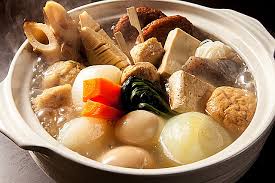Various kinds of ramen part 2
担々麺 Tantan-men
Tantan-men is a noodle dish originating from chinese sichuan cuisine. It consists of a spicy sauce containing preserved vegetables, chili oil, Sichuan pepper, minced pork,Sesame paste, and green onion served over noodles.
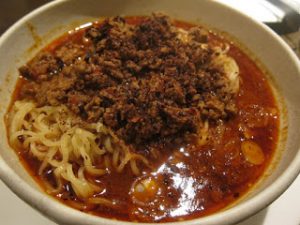
酸辣湯 Sanratanmen
Sanratanmen (noodles in hot and sour soup) is very similar to Sichuan hot and sour soup served with long noodles. The topping ingredients are sauteed and a thickener is added, before the mix is poured on the soup and the noodles.
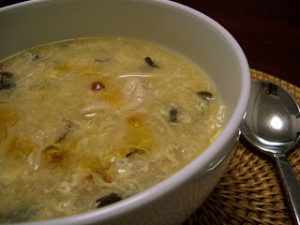
冷やし中華 Hiyashi chuka
Hiyashi chuka is chilled ramen noodles with various toppings served in the summer. Toppings are usually colorful cold ingredients and a tare sauce.served with a vinegary soy dressing and karashi (Japanese mustard).
Popular toppings are strips of tamagoyaki (egg omelette), carrot, cucumber, ginger, ham, and chicken, or may also contain barbecued pork.
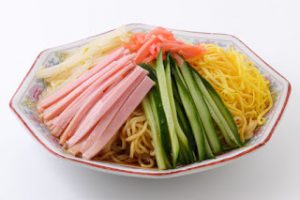
タンメン Tan-men
Tan-men is a mild, usually salt tasted soup, served with a mix of sauteed vegetables and seafood/pork. Not to be confused with the tantan-men.
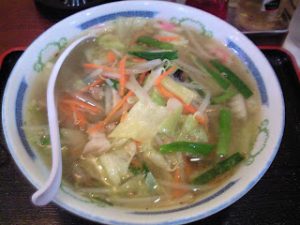
ワンタンメン Wantan-men
Wantan-men has long straight noodles and wonton, served in a mild, usually salt tasted soup.
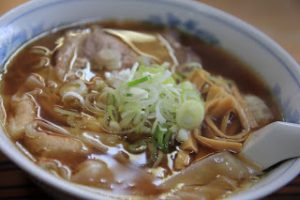
油そば Abura soba
Abura soba (“oil-noodles”). Essentially ramen and toppings served without the soup, but with a small quantity of oily soy-based sauce instead.
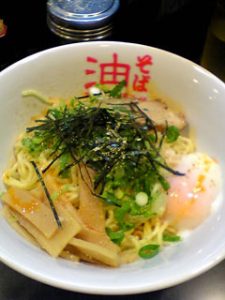
Thank you.
ODEN recipe
ODEN is a Japanese cuisine especially suitable for winter.
It is a type of Japanese stew or a sort of hodgepodge.
A variety of ingredients such as Boiled eggs, Daikon (Japanese radish), Chikuwa (fish paste rolls),Konnyaku (solidified jelly made of konjac potato) and soy-flavored Dashi Broth. The type of ingredients and Dashi Broth vary depending on the area and owner making ODEN.
The following is a recipe of ODEN using a liquid seasoning Kappo Dashi.
Product Name: DonDon Series Kappo Dashi 1L
Ingredients : Light-colored soy sauce, Dried bonito, Salt, Sugar, Mirin, Sake, Dried sardine, Hydrolyzed fish protein, Dried bonito extract, Hakkochomiryo, White soy sauce, Kombu (Dried seaweed),Dried mackerel, Shiitake mushroom,Amino acid (sodium Glutamate), Shusei(ethyl alcohol), Acidulant
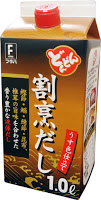
Expiration : 1year from manufacturing date
Produced by FUTABA Co., Ltd.
<Ingredients_4 servings>
Kappo Dashi・・・・・・・100ml
Water・・・・・・・・・・1,300ml
Daikon Japanese radish・・・・・・・・・1/4 sticks
(cut into 2㎝ thickness and parboil)
Satsuma-age deep-fried fish paste・・・・・・ 4 pieces(pour hot water and reduce excess oil)
Ganmodoki deep-fried tofu・・・・・・・・・4pieces(pour hot water and reduce excess oil)
Chikuwa fish paste rolls・・・・・・・・・・ 2sticke(cut diagonally into a bite size)
Hanpen white boiled fish paste・・・・・・・ 1cake(cut into 1/4 triangle shape)
Other preferred ingredients such as boiled egg, satoimo(taro), and octopus legs
<How to Cook>
① Combine Kappo Dashi and water in an earthenware pot bring it to boiling.
② Add all the ingredients and bring it to boiling. Turn the heat down to low and cook until ingredients are seasoned thoroughly.
See you later.
Various kinds of ramen part-1
Iekei ramen is a ramen noodle bar chain originating from a ramen bar called “Yoshimura-ya” located in Yokohama, Japan. The name “Iekei” literally means “house-type” from the kanji “家”. The chain uses pork and soy sauce as the base for their soup, and thick, flat noodles. The bowl usually comes with slices of roast pork, nori seaweed, and spinach, but there are other variations such as eggs, the number of pork slices, and the amount of seaweed.
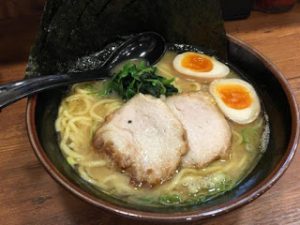
Tsuke-men (“dipping noodles”). The noodles and soup are served in separate bowls. The diner dips the noodles in the soup before eating. Can be served hot or chilled.
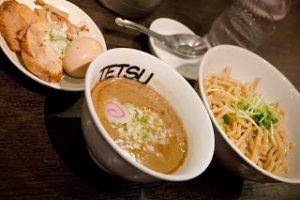
Curry ramen is a curry flavor ramen noodle dish that is provided at many ramen restaurants in the cities of Muroran, Noboribetsu, Date, and Tōyako in Hokkaido, Japan.
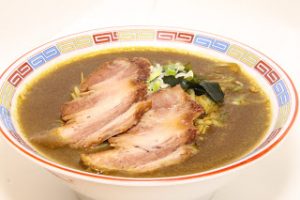
Chanpon is a noodle dish that is a regional cuisine of Nagasaki.
The noodles are thicker than ramen but thinner than udon.
Champon is topped with a variety of ingredients, mostly seafood, a soup made with chicken and pig bones is then added, stir-fried and dressed in a starchy sauce.
The stir-fried ingredients are poured directly over the cooked noodles, with the sauce acting as a soup.
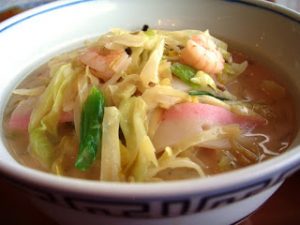
Tank you.
Nanakusa-Gayu (Rice porridge with seven spring herbs)
Happy New Year 2017
I’ll show a traditional new year’s dish this time.
Nanakusa-Gayu is Japanese event food to eat on the morning of January 7
It was introduced from China and started over 1000 years ago.
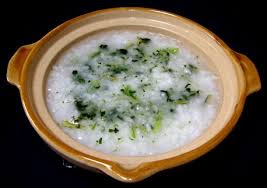
It is used for seven kinds of herbal gruel which recover from the tired stomach with drinking too much for New Year Holiday. In addition, eating Nanakusa-Gayu means such as happiness, prosperity and long-lived life.
Not all seven spring herbs are used in the Nanakusa-Gayu, but the ingredients may also differ depending on the region. It is added root vegetables, fried tofu, chicken and others. In any case, it is a light taste.
The following are seven spring herbs.
Seri (Water dropwort)
Nazuna (Shepherd’s purse)
Gogyo(cudweed)
Hakobera (Chickweed)
Hotokenoza (Henbit)
Suzuna (Turnip)
Suzushiro (Japanese radish)
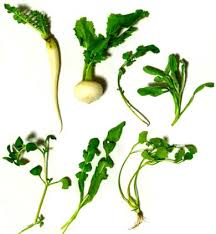
I hope you will have a great year.
Shio ramen
Shio (“salt”) ramen is a pale, clear, yellowish broth made with plenty of salt and any combination of chicken, vegetables, fish, and seaweed.
This salty broth is considered the oldest of the ramen broths.
In fact, shio translates to “salt,” and sea salt is considered the oldest form of ramen seasoning.
Flavor is simple but rich.
Occasionally pork bones are also used, but they are not boiled as long as they are for tonkotsu ramen, so the soup remains light and clear.
Chashu is sometimes swapped for lean chicken meatballs, and pickled plums and kamaboko (a slice of processed fish roll sometimes served as a frilly white circle with a pink or red spiral called narutomaki) are popular toppings as well.
Noodle texture and thickness varies among shio ramen, but they are usually straight rather than curly.
Hakodate style Shio ramen
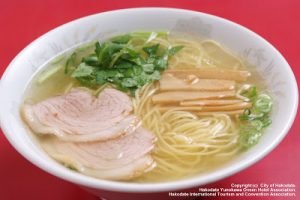
Hakodate style ramen is usually made with chicken broth resulting in a golden coloured soup.
Very often Hakodate Ramen comes with chicken meatballs.
Hakodate is where the tradition of making ramen soup flavoured with salt has remained unchanged even as new flavours and styles were introduced all over Japan.
Thank you.



